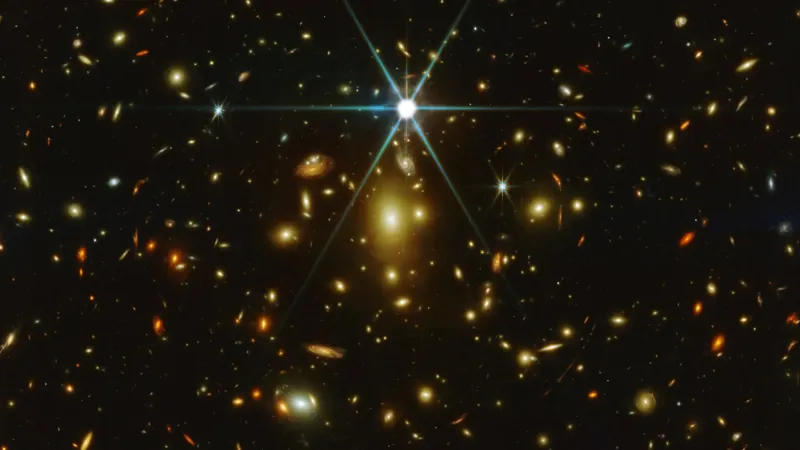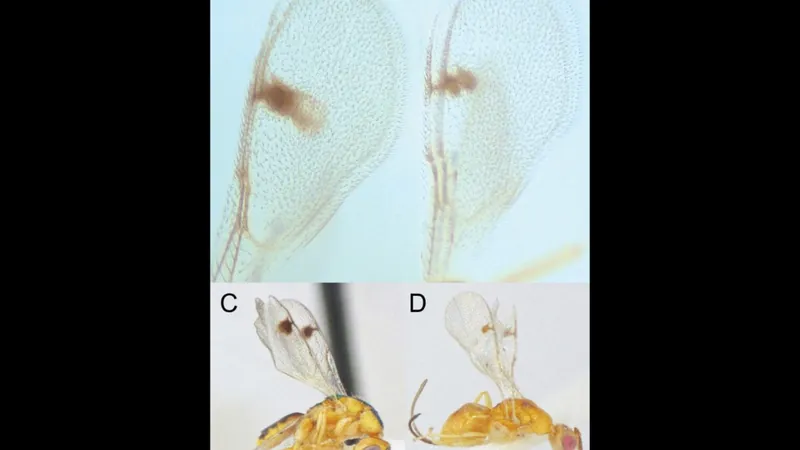
Breakthrough Discovery: Earendel, the Most Distant Star, May Be a Star Cluster Instead!
2025-08-17
Author: Wai
A Cosmic Mystery Unveiled
Astronomers are buzzing with excitement as the object known as Earendel, previously hailed as the most distant star ever discovered, might not be what it seems. Instead of a lone star shining brightly in the cosmos, new research suggests that Earendel could actually be a star cluster—a collection of stars held together by gravity, originating from the same swirling clouds of gas and dust.
From Distant Star to Star Cluster?
Located an astonishing 12.9 billion light-years away in the Sunrise Arc galaxy, Earendel was first spotted by the Hubble Space Telescope in 2022. It captured the imagination of scientists for supposedly being a star formed only 900 million years after the Big Bang, at a time when the universe was just 7% of its current age.
The James Webb Telescope's Game-Changer
In a striking new study published in The Astrophysical Journal, astronomers employed the James Webb Space Telescope (JWST) to reevaluate Earendel. They set out to determine if this celestial body might actually be a compact star cluster rather than a singular star or dual star system.
Their findings revealed that Earendel's spectral characteristics are remarkably similar to those of globular clusters—types of star groups commonly found in our own galaxy. Lead researcher Massimo Pascale from UC Berkeley stated, “If Earendel is a star cluster, it aligns perfectly with our expectations of how early globular clusters behaved in the universe's infancy.”
The Gravitational Lensing Effect
Earendel's discovery was made possible through gravitational lensing, a phenomenal cosmic trick predicted by Einstein. This effect occurs when massive objects, like a galaxy cluster, warp the fabric of space-time and amplify the light from more distant objects. Due to this bending of light, Earendel appears over 4,000 times more luminous than it would be without this cosmic magnification.
Data-Driven Insights
Using JWST's advanced Near Infrared Imager (NIRCam), researchers initially believed Earendel to be a massive star—a hot beacon of light outshining our Sun by a million times. However, a deeper spectral analysis conducted with the JWST’s NIRSpec instruments suggested a possibility that its light pattern resembles that of multiple stars seen in a cluster.
A Collaborative Effort
Despite the promising data, not all experts are convinced. Brian Welch, who led the original discovery team, cautioned that the spectral resemblance between a lensed star and a star cluster can be very close, highlighting the need for comprehensive analysis of all the data available.
Looking Ahead: Monitoring Earendel’s Mysteries
Both Pascale and Welch believe the secret to unraveling Earendel's real identity lies in monitoring microlensing events—tiny distortions caused by nearer cosmic objects passing in front of distant ones. This could help clarify whether Earendel is indeed a singular phenomenon or a grouping of stars.
As astronomers continue their quest to decode the mysteries of the universe, the JWST may provide further revelations about Earendel that could reshape our understanding of early cosmic evolution.




 Brasil (PT)
Brasil (PT)
 Canada (EN)
Canada (EN)
 Chile (ES)
Chile (ES)
 Česko (CS)
Česko (CS)
 대한민국 (KO)
대한민국 (KO)
 España (ES)
España (ES)
 France (FR)
France (FR)
 Hong Kong (EN)
Hong Kong (EN)
 Italia (IT)
Italia (IT)
 日本 (JA)
日本 (JA)
 Magyarország (HU)
Magyarország (HU)
 Norge (NO)
Norge (NO)
 Polska (PL)
Polska (PL)
 Schweiz (DE)
Schweiz (DE)
 Singapore (EN)
Singapore (EN)
 Sverige (SV)
Sverige (SV)
 Suomi (FI)
Suomi (FI)
 Türkiye (TR)
Türkiye (TR)
 الإمارات العربية المتحدة (AR)
الإمارات العربية المتحدة (AR)